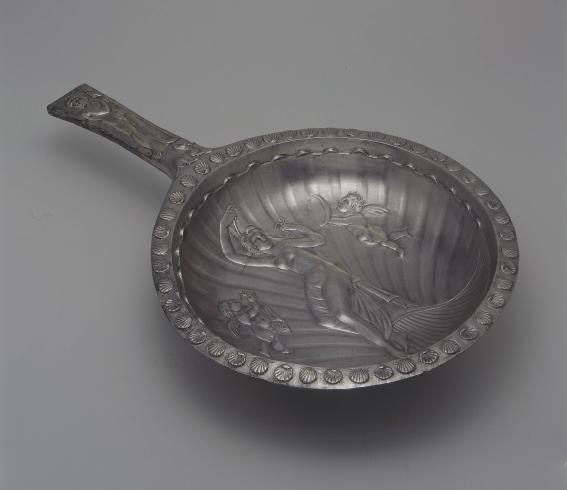Chance archaeological finds have brought to light important silver “treasures”, with items dating from the 4th and 5th centuries, the period known as Late Antiquity. Among the most prestigious are those found at Mildenhall, Chaource, Kaiseraugst, Carthage, and on the Esquiline hill, all spread across the western part of the Empire subject to barbarian invasions which the eastern regions did not experience until the 7th century.
Twenty-seven pieces of silver constitute the find of 1793 incorrectly known as a “treasure”. The term “treasure” refers to a collection of items of varying provenance and from different periods, some of them inherited, which constitute a financial reserve, buried in haste in the face of imminent threat, on which the owner can draw. This is not the case here. The Esquiline items were made within a fairly brief time span and twenty-two of them came from the same workshop. According to the monograms and inscriptions found on various objects, they belonged to several members of the same family – the gens Turcia. The presence of four statuettes depicting the four metropolises of the Empire – Rome, Constantinople (inaugurated by Constantine in 330), Alexandria and Antioch – linked to the public domain and ceremonial place the whole collection in the second half of the 4th century. It also indicated that their owners occupied an elevated position either by wealth or rank.
Like the Projecta Casket in the British Museum, the most famous piece of the “treasure”, the patera, belongs to the private domain. The main face of the casket produced in the Esquiline workshop depicts the scene of Venus at her toilet. Although the patera does not come from this workshop, it displays the same motif treated in a similar vein. The body of the vase is treated like the shell from which the goddess of Beauty emerged. The young hunter depicted on the handle, spear in hand with a dog at his heel, is clearly recognisable as the handsome Adonis whom the goddess loved and who was killed by a boar and raised from the dead for part of the year by Jupiter, thus embodying the principle of life. The theme, which for a long time was imbued with religious significance, is purely decorative here, or at best symbolic.
P. P.-H.

City of Paris municipal collection's website
The collections portal can be used to search the collections of Paris’s 14 municipal museums (approximately 336,000 works, including 43,000 belonging to the Petit Palais).
It is also possible to download around 12,000 images of the museum’s works free of charge.
Access the Museums of the City of Paris collections portal
Extern databases
Discover a selection of databases online presenting works from the Petit Palais or documents concerning the history of the museum.

